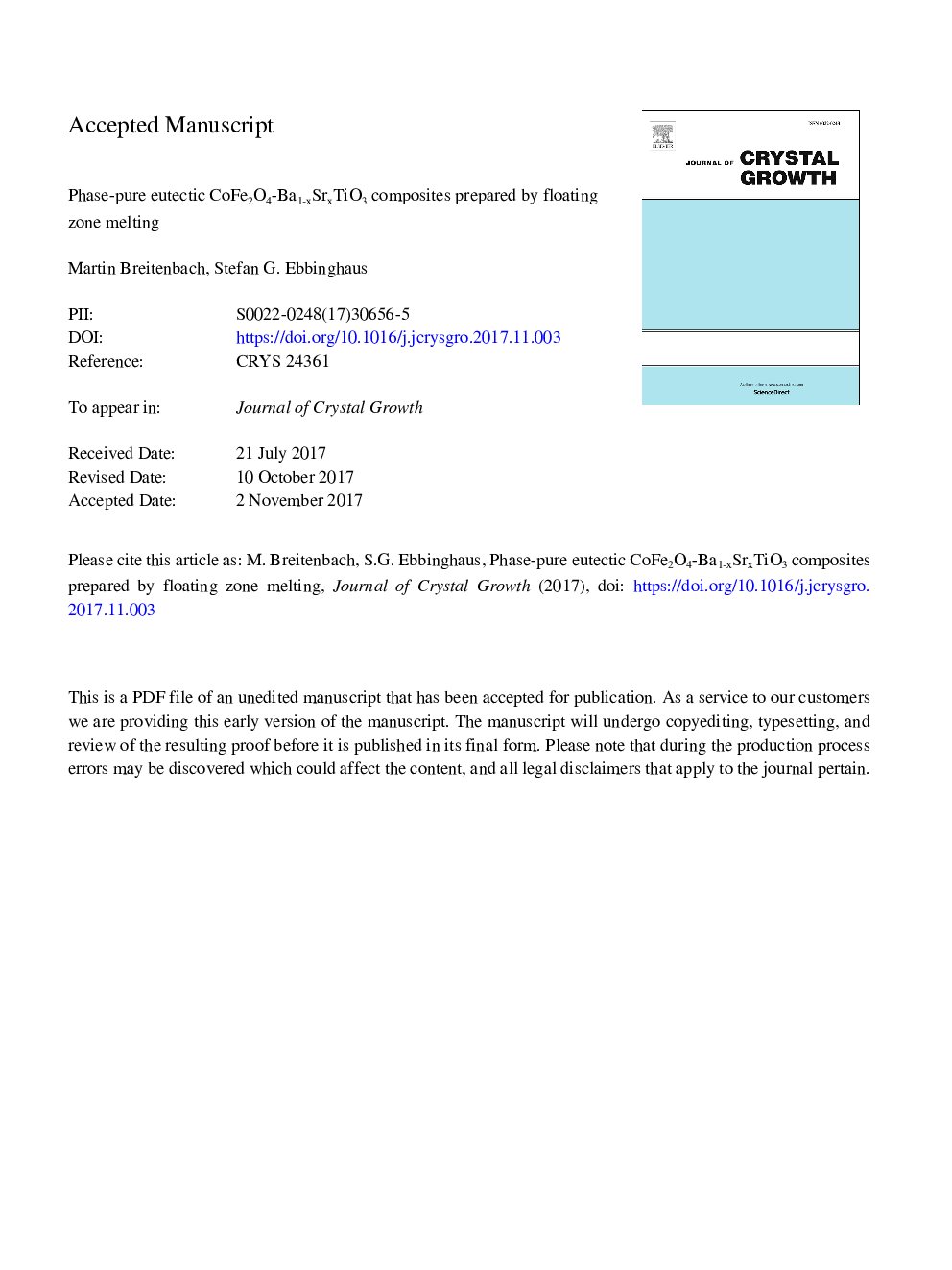| Article ID | Journal | Published Year | Pages | File Type |
|---|---|---|---|---|
| 8148974 | Journal of Crystal Growth | 2018 | 27 Pages |
Abstract
Composites consisting of ferrimagnetic CoFe2O4 and ferroelectric Ba1âxSrxTiO3 were grown by the floating zone technique. The influence of Sr substitution, growth rate and atmosphere during the floating zone process were investigated. The formation of the non-ferroelectric, hexagonal modification of BaTiO3 was avoided by a slight Sr substitution of 3â¯mol% and the formation of BaFe12O19 was suppressed using pure nitrogen as atmosphere during the floating zone melting. These synthesis parameters led to phase-pure, but electrically conductive CoFe2O4-Ba1âxSrxTiO3 composites. A thermal treatment at 973â¯K in air resulted in a strong increase of the electric resistivity accompanied by a decrease of the unit-cell parameters of both components indicating the healing of oxygen defects. SEM investigations revealed a variety of different geometric structures and crack-free interfaces between both phases. The low porosities observed in the micrographs correspond with densities above 90%. Magnetoelectric (ME) measurements confirmed a coupling between the ferroic orders of both phases with a hysteresis and maximum αME of 1.3â¯mVâ¯Oeâ1â¯cmâ1.
Related Topics
Physical Sciences and Engineering
Physics and Astronomy
Condensed Matter Physics
Authors
Martin Breitenbach, Stefan G. Ebbinghaus,
